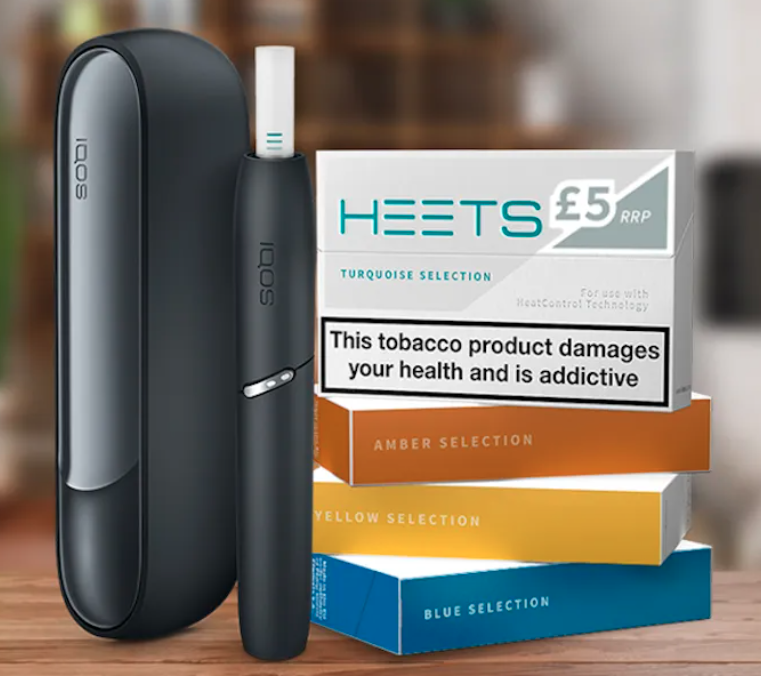If you are a smoker, you must have heard of IQOS devices as an alternative to traditional cigarettes. Are these cigarettes really less harmful? Can we reduce health problems by using it? At the end of this article, you will learn about what IQOS devices are and how it affects your body
What is IQOS?
IQOS is the International’s brand name that was given by phillip morris for its “portfolio of heated and e vapour products”
IQOS is one of the Heat not burn tobacco products, also called as heated tobacco products, are electronic devices that heat tobacco leaves to produce an inhalable aerosol, instead of burning tobacco like traditional cigarettes.Although IQOS is an electronic device, the FDA has classified it as a cigarette, which means the product is subject to all the same existing restrictions for traditional cigarettes
What are IQOS cigarettes made of ?
IQOS is made of a disposable stick called heatsticks(Heets) containing a tobacco plug
The tobacco plug is made from tobacco leaves, which are ground and reconstituted into tobacco sheets, called cast-leaf. These sheets are then crimped and made into a tobacco plug.
(Heets/HeatSticks) are real tobacco sticks used with IQOS devices. They are made up of elements that include a tobacco plug, hollow acetate tube, polymer-film filter, cellulose-acetate mouthpiece filter, and outer and mouth-end papers.
Heets work by heating the tobacco in each stick rather than burning as typical cigarettes, producing a tobacco vapour free of tar smoke or ash
There are 10 Heets flavours to choose from. All Heets have the same nicotine content.
How does an IQOS work?
The consumer inserts a Heets into the IQOS blade holder, where it is heated without combustion. Heets contain nicotine which is addictive and not risk-free.
How is IQOS a heat not burn product?
Tobacco heating systems operate at lower temperatures (240–350 °C) than traditional cigarettes (>600 °C), which reduces temperature use, and allows the aerosol to be produced without burning tobacco.
What are the differences between electronic cigarettes and IQOS?
Heat-not-burn products are different from e-cigarettes because they use actual tobacco, not the flavoured e-liquid typically found in e-cigarettes. The concept behind heat-not-burn is that it allows users to experience what looks and feels like smoking a regular cigarette without inhaling combusted tobacco.
Is IQOS less harmful than other cigarettes?
Although IQOS may have lower levels of some toxicants than cigarettes, it can still expose users to higher levels of other toxicants. Likewise, IQOS could expose users to lower risks of some diseases, but higher risks of others.
fewer toxic chemicals does not mean lower levels of harm when people use the product, and that reduced exposure claims are misunderstood as reduced harm claims.
no statistically detectable difference between IQOS and conventional cigarettes for 23 of the 24 BOPH in Americans and 10 of 13 in Japanese. Moreover, it is likely that the few significant differences were false positives. Thus, despite delivering lower levels of some toxicants, PMI’s own data(which is the production company of IQOS) fail to show consistently lower risks of harm in humans using IQOS compared with conventional cigarettes
How harmful is IQOS smoking?
IQOS has the potential to increase inflammation, infection and initiate EMT-related changes in the airways of users of these devices
“IQOS aerosol is generated using heat-sticks(1.4 mg nicotine); while cigarette-smoke-extract (CSE) was generated using Marlboro Red cigarettes (1.2 mg nicotine)”. Said by Philip Morris
IQOS exposure induced CSE release at the highest concentration , suggesting that IQOS is effective in inducing chemokine release from airway cells.
It was also discovered that exposure to IQOS has been reported to alter mitochondrial function, which may further exaggerate airway inflammation, airway remodelling and lung cancer. These products have the potential to increase oxidative stress and increase respiratory tract infections by increasing microbial adherence to the respiratory tract.
higher exposure for non-cancer risk was observed for HTPs ( tobacco products that heat the tobacco at a lower temperature than conventional cigarettes) when compared to commercial cigarettes. Due to conflicting results and the limited knowledge of IQOS exposure.
On the other hand,HTP products including IQOS, may be products with a reduced risk of chronic diseases, including respiratory and cardiovascular diseases and cancer,it may also provides lower levels of cholesterol in the bloodstream compared to traditional smoking, although in the case of non-smokers so far, they may pose a risk of their occurrence.
It was also found that mean lifetime cancer risk values were decreased by more than one order of magnitude when comparing HTPs and commercial cigarette.
Growing evidence indicates that the IQOS tobacco heating system may not be as safe as the manufacturer claims; this is due to its potentially harmful ingredients and the increased concentration of nicotine and other harmful chemicals emitted by HTP devices .
Many studies, both independent and industrial, have shown that IQOS sticks contained 70–80% of the concentration of nicotine found in traditional cigarettes . independent studies have reported that HTPs deliver nicotine to the aerosol at levels higher than e-cigarettes . it was also shown that IQOS emit significantly lower levels of carbonyls and submicron particles than commercial cigarettes, but higher levels than e-cigarettes
What is the FDA decision about iqos?
The agency has not decided on whether the device can be marketed as less harmful than other tobacco products.The FDA decision applies to the Pre-Market approval application.
Conclusion:
Whatever method of smoking-IQOS or traditional smoking- it will lead to almost the same results on health. Despite the development of methods for producing cigarettes, they are still very harmful to health and carry several complex side effects in addition to the effects currently known.



